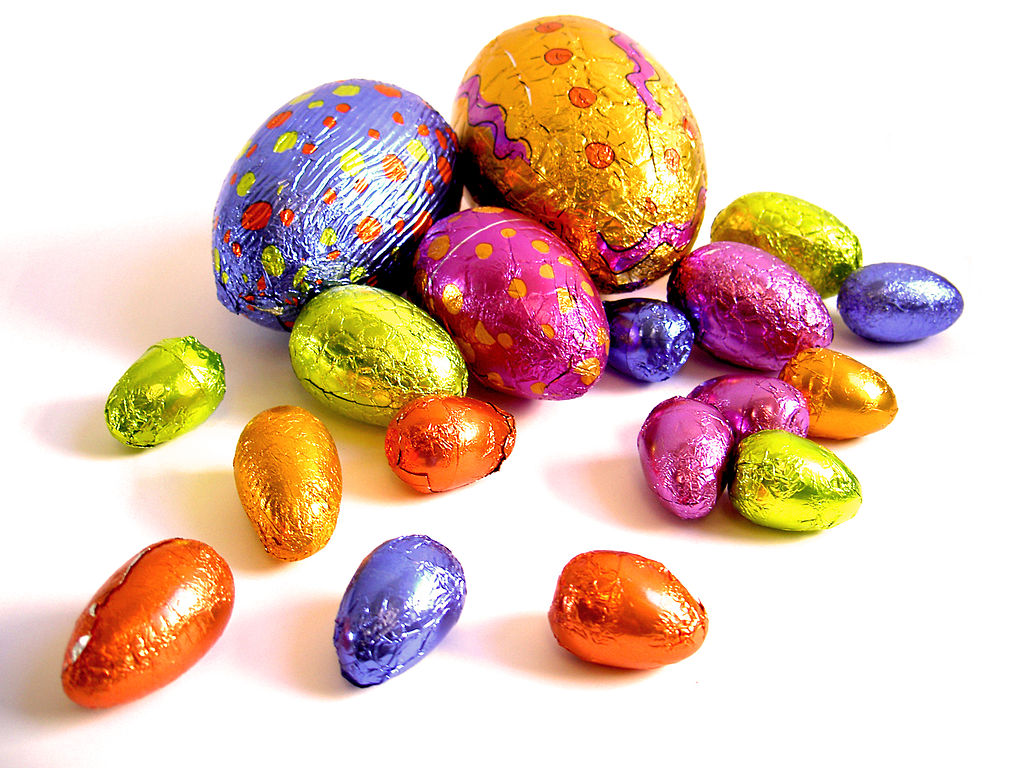
Does one little chocolate egg tend to turn into five little chocolate eggs over Easter? I’ve got 10 tips that will help you have a healthier Easter this year. Don’t worry – you still will be able to enjoy a chocolate treat! Originally published on bodyandsoul.com.au
1. Don’t bulk buy
“Only buy a small amount of good quality chocolate, rather than lots of poor quality chocolate,” says accredited practicing dietitian Melanie McGrice. The darker the chocolate the more antioxidants, so chocolate with 60 per cent cocoa is a good option.
2. Keep chocolate for dessert
“Eating Easter eggs on an empty stomach will spike blood sugar levels and put you on a hunger and energy level roller coaster,” says naturopath Tim Altman. “Make sure you eat Easter eggs after having a protein-based or high fibre meal.”
3. Choose wholegrain hot cross buns
“Wholegrain hot cross buns have more fibre and contain far more vitamins and minerals than normal ones, plus they’re more filling,” Altman says. “You’ll find them in health food stores and good bakeries.”
4. Share your sweets
“If you have an abundance of chocolate, don’t leave it lying around the house to tempt you,” says Australian Diabetes Council accredited practising dietitian Mellissa Hay. “Share them around with friends, family or work colleagues.”
5. Small is smart
Here’s some good news for chocaholics – recent US research found healthy people who eat chocolate regularly tend to have a lower BMI than those who don’t eat it at all. But the key is having small amounts. “A big Easter bunny can have as many as 1075 calories, whereas the small hollow eggs only have about 72 calories,” Hay explains. “Go for smaller eggs and savour the flavour.”
6. Stock your fridge
Have plenty of delicious healthy foods on hand so you don’t automatically reach for the Easter eggs. “Find healthy substitutes to chocolate that still satisfy your sweet cravings,” suggests accredited practicing dietitian Ashleigh Brunner. Use cocoa powder to make hot chocolate or smoothies or make fruit kebabs to dip in melted dark chocolate.
7. Try raw chocolate
Have you tried cacao? It’s chocolate in its raw form and is packed with antioxidants, calcium and potassium. “Cacao raises our serotonin levels, acting as an anti-depressant, reducing PMS systems and mildly improving mood,” says health coach Claire Obeid. “It can be used for cooking, adding to smoothies or sprinkling on muesli.” Try making these cacao and chia seed treats for a sweet, nutritious hit.
8. Give in to your cravings
“Easter is a special occasion and it is okay to eat some chocolate,” Brunner insists. “Studies have proven that if you deny your food cravings, you are more likely to overindulge.”
9. Monitor your food
Stop mindless snacking over Easter by keeping a food diary – a US study found people who kept daily food records lost twice as much weight as those who kept no records.
10. Build a calorie bank
Try to exercise every day over Easter to balance out the consumption of extra kilojoules. “The more fuel you burn off via exercise, the more it will counterbalance the extra input,” Altman explains. Get the whole family involved by going for a bike ride, a beach walk or playing a game of touch footy.
